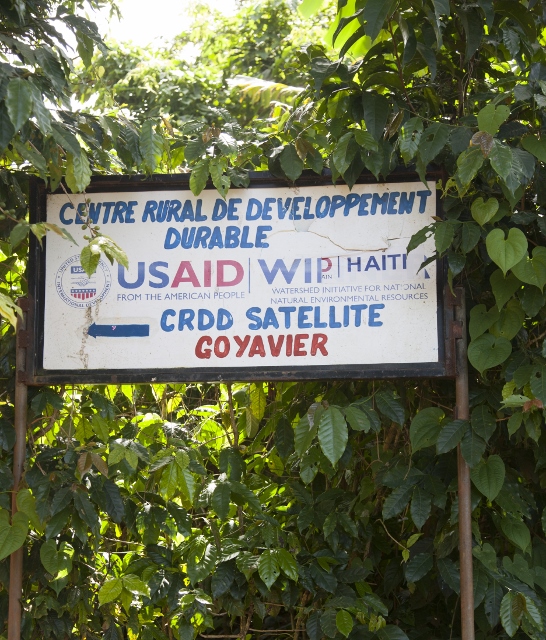USAID’s answer to Oxfam on the article on the WINNER project in Haiti
“The distribution of the bins to FADPG was carried out according to the grant agreement.” But is that enough for farmers?

This month’s CloseUp magazine hits mailboxes this week, containing a feature on Oxfam America’s Aid Effectiveness Team’s work in Haiti. It includes a specific story about a farmers association and delivery of storage bins in Goyavier by Chemonics, the for-profit contractor that is implementing the Feed the Future WINNER project in western Haiti. In early September, Oxfam reached out to USAID/Haiti for a comment on the draft article.
Below the magazine portal, we have shared USAID’s statement on the draft article (in color), in which they respond specifically to the storage bins delivery. Do note that USAID’s viewpoint has been incorporated into the final version of the article, “We are spectators no more” and that we have excluded the name of the federation president, for which Oxfam did not have informed consent. USAID has also published a related story about Goyavier potato farming.
We welcome a continued discussion with USAID here on the Politics of Poverty blog, as a fruitful dialogue between decision makers and the people who have a direct experience of aid projects is Oxfam’s continued intent. Read the CloseUp article below (pages 11-14), as well as more on Oxfam’s perspective on the article here.
***
USAID’s Answer to OXFAM on the article on WINNER
USAID’s Feed the Future West (WINNER) is a multi-sectoral project that aims to increase Haitian farmers’ incomes in U.S. Government development corridors―Cul-de-Sac and Matheux—and the Mirebalais region. Through agricultural intensification, rehabilitation of rural infrastructure, and good governance of natural resources, the program improves the livelihoods of targeted farmers. The program works in close cooperation with farmers and farmers’ associations, non-governmental organizations, agribusinesses, and government actors to comprehensively increase agricultural productivity and post-harvest efficiency and improve the management and protection of the corridors’ key watersheds.
The main aim of the WINNER program is to help farmers grow more food and increase their incomes. The program works in close cooperation with farmers’ associations to assess their needs, while providing training and introducing effective agricultural methods. The assistance includes provision of seeds, fertilizers, tools, and appropriate technologies. The program also supports sustainable hillside agriculture, erosion control, tree planting, and watershed governance, as well as creating markets for the agricultural produce by improving rural roads, strengthening market information systems and post-harvest operations and by helping to establishing public-private-producer partnerships.
Among other benefits, the WINNER program has:
-
Increased the output of nearly 15,000 farmers, generating more than $7 million in income.
-
Trained and graduated over 2,000 master farmers
-
Introduced improved seeds, fertilizers, and technologies to over 17,000 farmers
-
Increased beneficiary farmers’ rice yields by 129 percent, corn yields by 368 percent, bean yields by 100 percent, and plantain yields by 21 percent
-
Distributed over 260 greenhouses to beneficiary farmers to improve farming techniques on degraded hillsides